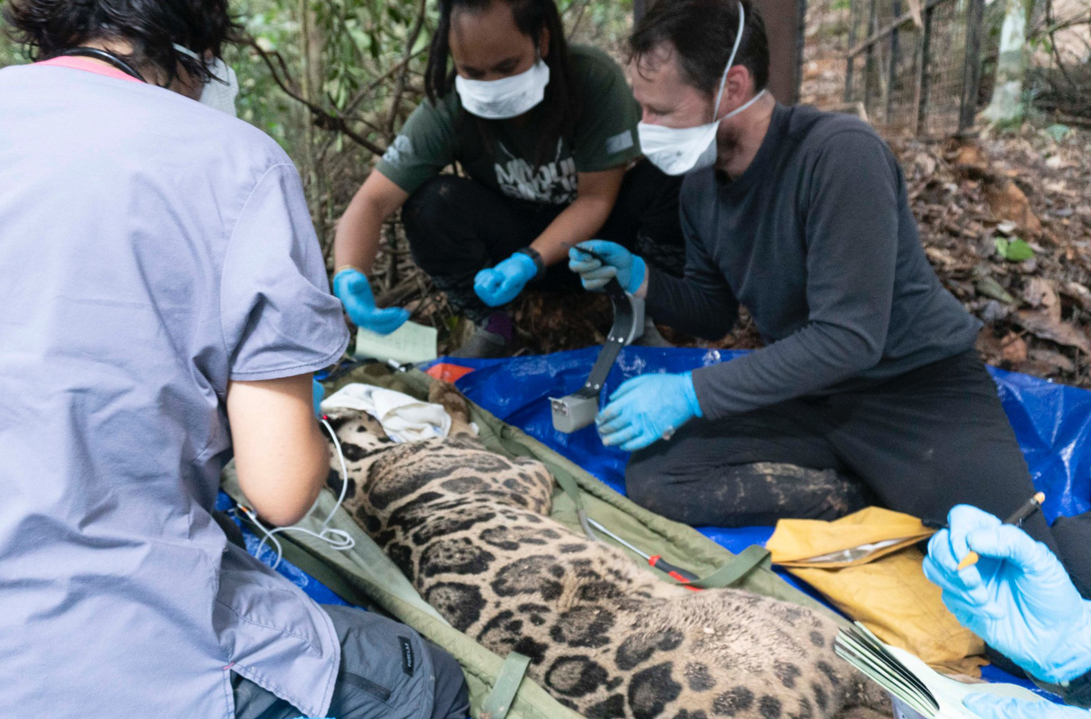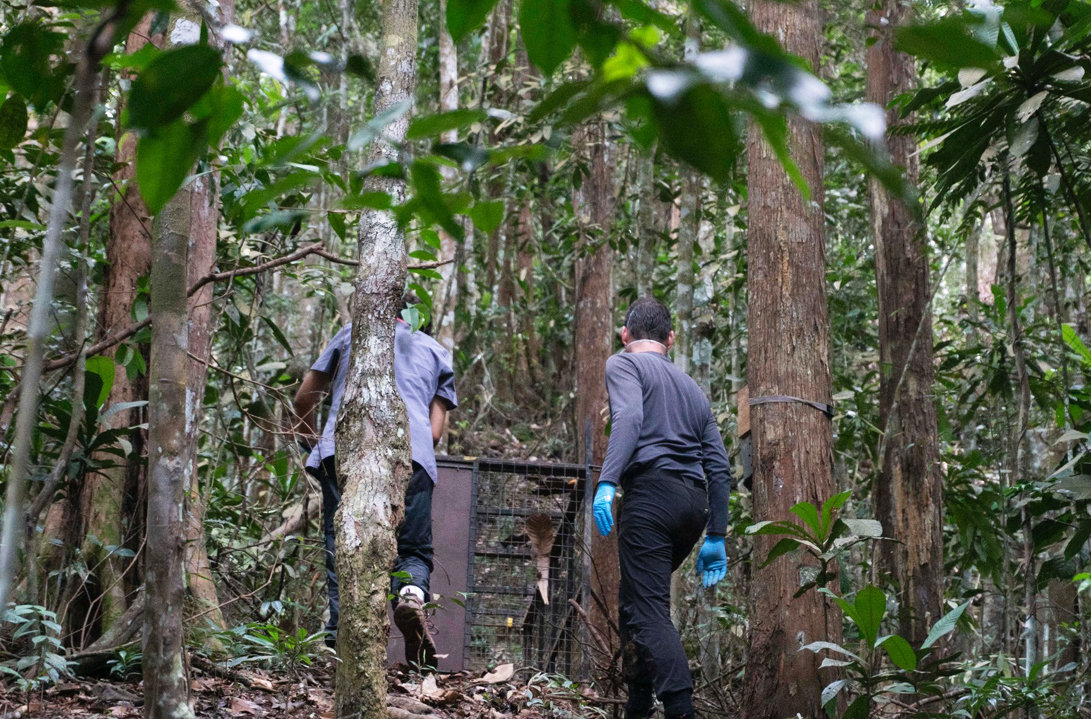Sunda clouded leopards (Neofelis diardi) are apex predators on the island of Borneo. They are elusive, extremely difficult to study and classified as Vulnerable by the IUCN Red List of Threatened Species. Little is known about their use of Borneo’s rapidly changing landscape, so this project is using whole genome sequences of Sunda clouded leopards to explore the links between rapid landscape conversion and biodiversity.
CONSERVATION CONTEXT
Bornean landscapes face enormous pressure. Shared between four rapidly developing states, the forests of Borneo have been the subject of intense political and economic debate both locally and internationally. Science can nudge this debate along in a productive direction by offering empirical and objective understandings on the impact of land use change on keystone wildlife that support the complex ecosystems the govern Borneos forests.
Since 2007, the WildCRU has been actively studying the islands apex predator, the Sunda clouded leopard. Data derived from camera traps and satellite collars has already been translated into interactive ‘suitability maps’ that enable policy-makers to quickly identify and inspect areas that are crucial for clouded leopard connectivity.
To complement and strengthen our understanding of these landscapes, we sequenced the first whole genomes of Sunda clouded leopards caught in the wild. Whole genomes offer an insight into the population histories of the species from just single genomes. This powerful tool will enable us to confidently draw associations between landscape changes and the ability for clouded leopards to disperse long ranges.


APPROACH
Sunda clouded leopard live-trapping
The Bornean Carnivore Programme team is spread across several field sites mostly in montane primary forest in Sabah. Year-round camera trapping is the only way to effectively monitor and find the hotspots for clouded leopard activity – without which, identifying sites for live-trapping would be near impossible. Live-trapping is a logistically heavy operation, and requires a relatively large team to execute due to the difficult terrain that clouded leopards use regularly. Each live-trap site is often a 6-7 hour walk from base stations, involving river crossings, mud and very steep hills. Live-trapped individuals are fitted with satellite collars and have blood drawn, which is then used for whole genome sequencing.
Population connectivity modelling
We use data from the GPS collars and whole genome sequences to understand just how affected clouded leopards are by the heavily fragmented forests that make up Sabah today. We write these relationships into mathematical equations often called ‘models’. A model allows us to make predictions about how future land-use changes will affect clouded leopard connectivity.
Toolkit building and policy integration
These models have now been coded into a usable app called the ‘Decision Support Tool’. The app integrates all of our best knowledge and data on the Sunda clouded leopard and unifies theoretical knowledge with practical applications. We’re working closely with state planners on it’s use.
IMPACT HIGHLIGHTS
Delivered policy toolkit to stakeholders in Sabah
Expanded datasets of collared and sequenced Sunda clouded leopards
Presented 4 years of research impact to state park authorities
PROJECT MEMBERS
Chrishen Gomez leads this PhD project, supervised by Dr Andrew Hearn.